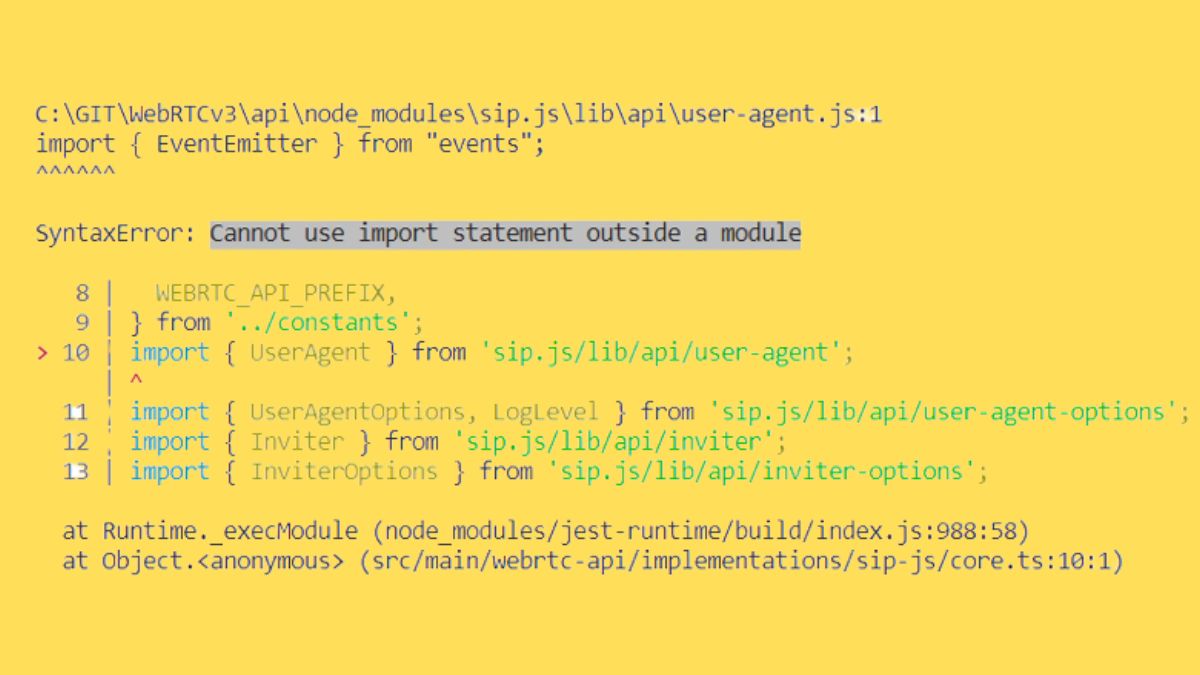JavaScript is becoming a crucial language in the world of contemporary web development. Due to JavaScript’s extensive ecosystem and plethora of libraries and frameworks, developers frequently must juggle several files and modules. However, when doing so, they can get the obscure “Cannot Use Import Statement Outside a Module” problem. The purpose of this page is to help you better understand this mistake, as well as its possible causes and potential resolutions.
Understanding the Error Message
When working with modules or scripts, the “Cannot Use Import Statement Outside a Module” problem is common in JavaScript environments. When you get this error, it’s because you’re attempting to utilise an import statement outside of a module. Using import statements, you may include the behaviour of external modules into your own JavaScript code. These statements will only execute if the JavaScript file is understood to be a module.
Common Causes of the Error
- Lack of ES6 Module Support: This error may appear if you are using a browser or development environment that does not natively support ES6 modules. ES6 modules provide a consistent framework for organising and moving JavaScript code, however they may not be completely supported in all earlier contexts.
- Missing
type="module"Attribute: In order for JavaScript to be recognised as a module in HTML pages, the type=”module” property must be included in the script tags containing the JavaScript code. This error can be caused by not doing so. - Incorrect File Extension: It’s possible that the file extension you pick will have an effect on how JavaScript files are read. To ensure that your file is processed as a module, save it with a module-specific suffix, such as.mjs or.js.
- Incorrect Use of
importStatements:The issue may occur if the import statement is used incorrectly or outside of a module’s scope. This can happen, for example, if import is used in a browser script that lacks a well-structured module hierarchy.
Resolving the Error
If you’re seeing the “Cannot Use Import Statement Outside a Module” problem, follow these instructions to fix it.
- Ensure ES6 Support: Verify that ES6 modules are supported by either your development environment or the browser you intend to use. In such case, you might want to use a translator like Babel to convert your code to an earlier version of JavaScript.
- Add
type="module"Attribute: JavaScript files can be embedded in HTML with the addition of the type=”module” attribute to the script element. The script’s module status is sent to the browser via this property. - Use Correct File Extensions: JavaScript modules should have the.mjs (ECMAScript Modules) or similar file extension. Any file with a.js suffix will work in a Node.js environment.
- Review
importStatements: Verify your import declarations twice. They are intended for usage in module files or other appropriately set up settings. Make sure your code follows module syntax if you’re trying to use ES6 modules.
Conclusion
When dealing with modules or scripts, JavaScript developers sometimes run across the “Cannot Use Import Statement Outside a Module” problem. Navigating this mistake and continuing to construct powerful, modular JavaScript applications is possible with an awareness of the possible reasons and the proposed remedies. Knowing how to work with modules and import statements is crucial for effective and organised code development, whether you’re dealing with browser-based scripts or server-side Node.js apps.
ALSO READ: Dealing with the Error: Last Name Not in Expected Format: Troubleshooting and Solution











